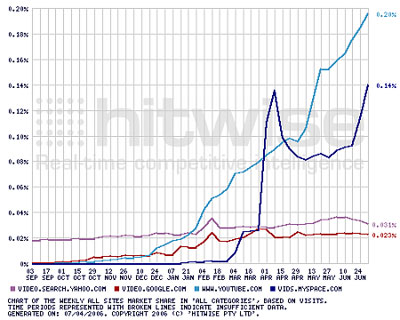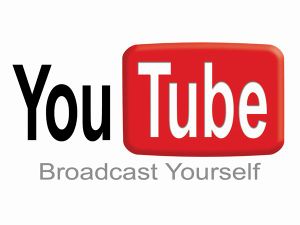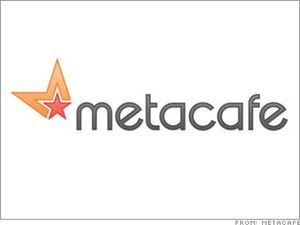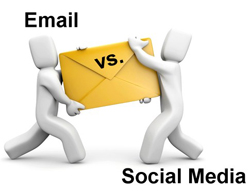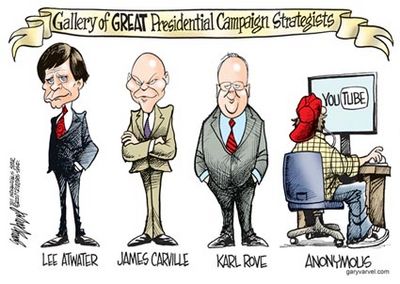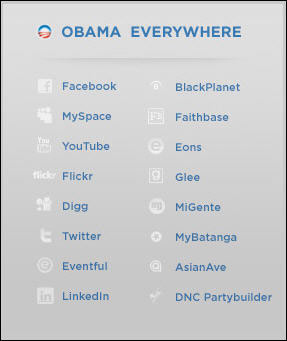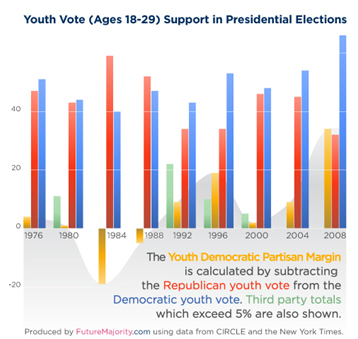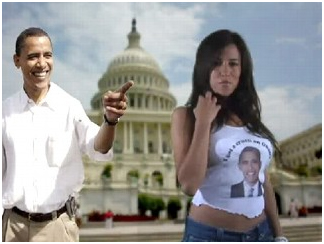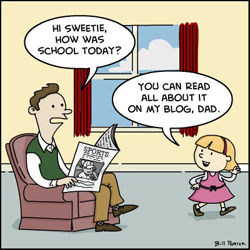User:Socialwhat
Contents
Group Members
Tiffany Huard, Jordana Klak, Judith Kwong, Naomi Lee, Andy Truong
Group Name :
Introduction
Social media are online networks where humans are able to communicate with one another and encourage connections between one another, participation, openness, conversation, and develop a sense of community. Since the advancement of technology, the internet has allowed for the establishment of online video sharing sites, these sites are beneficial in many ways, individuals have been able to become celebrities of the online world through the sharing of their videos. People have also been able to obtain useful knowledge through “How To” videos, but individuals have not been the only ones benefiting from social media networks. Businesses and organizations—such as political groups—have been utilizing these networks as sources for marketing. Examples of social media networks are video sharing sites, such as Blinkx, Buzznet, Flickr, GameVideos.com, MegaVideo, Metacafe, and YouTube.
Project Statement
Technolgy: Social Media Websites
Issue: These networks have been beneficial in many ways but one of the main benefits is the ways in which these networks have been used to enhance marketing.
Social Media Marketing
Social media marketing is a two-way process; it involves interactions between customers and the marketers. Advertising on sites such as FaceBook is not a form of social media marketing; although it may seem like it, this is just a general form of advertisement since opinions that people many have can’t be shared between one another .Social media marketing is mostly an internet-based way of advertising that many businesses have begun to use to market their products through the net by interacting with people through social media channels. Using this method of marketing allows business to obtain feedback from opinions left behind by potential customers; with this, businesses can understand the changes that are needed to be made in order to attract potential customers. This type of marketing has changed how consumer opinions are spread around, the old primary way, “word of mouth marketing”—opinions being spread through verbal conversations—have been replaced with the use of social media marketing. Opinions are now spread through the forms of blogs, and forums. One of the main reasons why business has been utilizing social media marketing is because of the low promotional costs needed to advertise their business through the online resources. The promotional costs are minuscule, except for the limitation of time, but advertising through giant billboards or posters would cost businesses thousands of dollars, while simply designing and uploading an advertisement through via video would save them large sums of money. Aside from the low promotional costs, businesses can yield massive amounts of attention, because of the potentially large number of people that visit online video sharing sites. The popularity of social media networks have been growing exponentially each year and is expected to continue with the levelling off of new people who join these networks by 2012. This growth has been caused mostly by teens and young adults all around the world, and this has opened a large market for businesses to capitalize upon, with the use of social media marketing methods. One of the ways in which businesses have done this is by marketing a product, and allowing discussions to form which initiates demand for variously discussed products such as game consuls, media player devices, televisions, cameras, and cars. Social media marketing includes two distinct areas of focus. One of which is known as “social media optimization”. This is the process of trying to have already created advertising content distributed to a larger number of people by using many different social media channels, such as posting links on Digg and YouTube. The second area of focus is known as off-page tactics that encompasses writing content that is appealing to its viewers. Written components are marketed through blogs, forms, etc.
Video Social Media Websites
YouTube
What is Youtube?
Youtube is a video sharing website where users can upload, view and share video clips. YouTube is built upon readily-available technologies. Videos can be uploaded in the user's choice of format which includes Audio Video Interleave (avi), Quicktime (mov), Moving Picture Experts Group (mpeg), and Windows Media Video (wmv). YouTube's servers automatically convert the video and serve it as Flash Video (flv) format. This provides a mostly hardware and software independent solution for YouTube users, as most video recording devices record in one of the accepted formats, and the Adobe Flash browser plugin allows videos to be played in any major web browser on all major operating systems. Unregistered users can watch most of the videos on the site whereas registered users are allowed to upload an unlimited number of videos. Videos which may contain potentially offensive material cannot be uploaded by anyone under the age of 18. Youtube is the most widely used video streaming website on the internet today.
History of Youtube
Youtube was created by Chad Hurley, Steve Chen, and Jawed Karim in February 2005 and was officially launched in November of that year. Before Youtube there were very few methods available for users who wanted to post videos online. However, due to Youtube’s easy to use interface, it is possible for anyone with a computer to post a video for millions of people to see within a few short minutes. This opened up a whole new dimension of the internet. The site immediately caught on and was even named Time Magazine’s Best Invention of 2006. In the past three years Youtube has grown into the most widely used video sharing site. It is estimated that there are between 150, 000 to 200, 000 videos published each day on the site. In October 2006, Google announced that it was going to purchase Youtube for 1.65 billion dollars in a stock-for-stock transaction. One of several efforts that Google has made to increase revenue at YouTube is by introducing advertising onto the site. It has started showing ads within videos and running contests sponsored by marketers. In October of 2008, it added “click to buy” icons to ads that took viewers from YouTube videos to iTunes or Amazon.com. In mid-November Google also announced that it would begin selling space on YouTube search-results pages to advertisers, which allows anyone who has a video on YouTube to promote it on a search-results page. An advertiser can bid on keywords like “silly cats,” “financial crisis,” “James Bond,” or anything they want. Advertisers are charged when a viewer clicks on the ad, and can set a maximum price per click that they want to pay. Google determines which ads will be shown based on what price the advertisers bid, along with factors like relevance to the keyword, which is similar to the way it selects ads shown on Google’s regular search results. Although Youtube has been very beneficial and is a massive advancement in technology, it has not been without problems. In March, 2007, Viacom sued Youtube and Google for over 1 billion dollars in damages due to “massive intentional copyright infringement”. Although Youtube struggles with copyright issues it still manages to be one of the most widely used websites in the social media world
MetaCafe
What is Metacafe
Metacafe has more than 30 million unique viewers each month and is one of the world’s largest video site focused exclusively on short-form entertainment. Metacafe teams up with a wide range of content creators to help develop short-form video as an entertainment genre. The VideoRank technology on the website helps show people the most entertaining videos available through the site. In January, 2008 Metacafe announced that they would be teaming with mobile entertainment companies which would allow their video’s to be streamed through mobile devices. These videos are accessible by mobile users in more than 100 countries around the world showing just how widespread this social media website is.
History of Metacafe
Metacafe Inc. was founded by Eyal Hertzog and Arik Czerniak and raised $3 million from Benchmark Capital. In June 2006, the company closed a Series B financing round of $12 million after which, the website's traffic increased rapidly. By June 2006 Alexa Traffic Rating, which is a list of all sites on the web sorted by traffic, ranked Metacafe at 128th on their list. In September, 2006 the company moved its headquarters to Palo Alto, California and in October, Metacafe was ranked the third largest video site in the world according to comScore.
Social Media versus Traditional Advertisment
Traditionally, companies and corporations rely heavily on their advertisements in newspapers, television commercials, billboards, magazine spreads and radio ads. According to an article written by Jacob Morgan, to have a full-page ad in The Wall Street Journal, it costs around $175,000. A 30 second commercial usually costs $350,000, billboards average out to be $25,000 per year and to have a radio ad, you’re looking at about $5000 a week. With our attention spans decreasing now more than ever, it has become a norm for individuals to ignore the pesky ads seen everywhere. Traditional advertisement relies on a one-way street, wasting millions of dollars each year just to catch the attention of a few individuals and hoping there will be an ROI (Return On Investment.) Once the budget for traditional advertising is up, the campaign usually comes down to an end with it.
Now social media on the other hand, its very friendly with your wallet – most of the time free, it’s a two-way street, meaning people can rate your ad, subscribe to it or comment on it and finally, individuals can track how many hits their advertisement received daily. Social media is highly interactive, constructing ongoing conversations between numerous bloggers and it typically influences a highly targeted market. The outcome of using social media is not easy to predict, but if it is done right, it can have a considerable impact on popularity and brand awareness. Now it is known to be essential to incorporate social media into your branding tactic and marketing plan.
Social media played a substantial role in Barak Obama’s campaign and success. He mentioned in one of his speeches that he was able to travel to so many states to campaign solely because of how much his campaign was able to save from social media. Evidently, Obama used social media appropriately, which had a significant impact on his popularity. Obama took the advantages of social media and had 1,789,300 more pages on his main website than McCain did. By the end of August, a study was done showing that Obama has over 500 million blogs mentioning him while only 150 million blogs mentioned his competitor, McCain. Bloggers are quickly being recognized in the political world as an important community to impress. Social media has become a revolution for the political world and shook the conventional wisdom of “political strategies” and will most likely contemplate and perhaps replace many government functions.
Social Media and Politics
How Does Social Media Relate to Politics?
Marketing has always played a major role in political campaigns in democratic countries. Political candidates not only use advertising to acquire votes, but they also try to ‘sell’ themselves, their values, and their political affiliations to a larger population.
The American presidential election in 2008 was no different, except the campaign was conducted through a different medium, one which focused on utilizing the vast potential of social media. Both presidential candidates relied on traditional media to advertise their candidacy, but they also integrated their campaigns with online social networks. The shift in the importance of video social media can be illustrated by comparing the 2004 and 2008 elections. In 2008, 35% of Americans polled stated they watched political videos online, which was approximately a 20% increase from 2004.
One of the most important social media websites during the American 2008 presidential campaign was YouTube. It played such an important role that bloggers, researchers, and journalists have called the 2008 election the “YouTube election.” Both John McCain and Barack Obama created channels on YouTube, which allowed users to browse the candidate’s uploaded videos and subscribe to receive new video content. Videos on YouTube also allowed for the opportunity for people to leave comments and post video responses. YouTube provides a venue for a two-way-interaction; people can watch videos to become informed, leave comments, and interact with candidates, while politicians can track viewership and create personal connections with voters.
With the new website Barack Obama launched called Change.gov there is an increased possibility for the president elect to interact with American citizens, and have them interact with him, which is a huge departure from previous presidencies. Social media has not only elected a “social media president” as some sources have termed him, but there is also a new relationship being formed, which has the potential to transform the government-citizen relationship to one of a consumer-client. Like many businesses, Barack Obama has cultivated many Americans voters as loyal ‘customers,’ which makes him responsible to be accountable and informed of voter concerns.
With the advent of the internet and the increasing popularity of social media websites, combined with the outcome of the 2008 American presidential election, the traditional strategies for conducting political campaigns has forever changed, especially within America. Barack Obama’s campaign has provided an example of how social media can be effectively utilized to increase voter support, which severs as a model for other democratic countries to follow. In the future voters will expect more from their government as well.
Victory of Social Media and Barack Obama in 08'
Some examples of Media and Social networking sites Barack Obama was part of:
•MySpace
•Flickr
•Digg
•Blackplanet
•MiGente
•AsianAve
•Glee
•Eons
•Youtube
There was many different ways Barack Obama used online social media websites in the 2008 election. He joined various social networking websites like Facebook and MySpace, and dominated video websites like YouTube, to name a few. Through these websites he was also able to raise a large amount of money for his campaign. Overall 88% of Barack Obama's total donations were collected online and he successfully raised $51 million, which doubled John McCain's donated funds.
Barack Obama also used social media websites more effectively than John McCain. On YouTube alone, Barack Obama’s channel featured 1,800 uploaded videos, contrasted with the 330 videos that John McCain posted. Barack Obama did also had more interaction with American voters through these sites than John McCain. For example, on YouTube Barack Obama had 117, 873 subscribers compared to John McCain’s 29,202 subscribers. Barack Obama also had 25, 226 friends, while during the election John McCain had no friends listed. These statistics illustrates a discrepancy of how both candidates utilized video social media. These trends extended into other forms of social media, like Facebook, MySpace, and twitter.
The content of BarackObama’s YouTube videos also differentiated him from John McCain. During the primary election his campaign videos focused on his speeches, while the majority of Joh McCain’s videos were commercials. In comparison, John McCain’s YouTube campaign was focused on modernizing traditional media, while Barack Obama developed more creative and engaging ways to promote his candidacy.
Still, how was the 2008 American presidential election a win for social media, specifically video sites?
Firstly it popularized many social media websites. For sites like YouTube that were already popular, it increased traffic. According to the Los Angeles times, social media websites, including YouTube, broke personal records of user participation and activity on Election Day, November 4, 2008. Secondly, the use of online websites revolutionized politics, which will encourage politicians to invest in social media sites. In a 2007 YouTube interview, Barack Obama stated that if elected he would continue to use video social media to inform and remain connected to Americans. At present he has lived up to this statement and has continually posted ‘Weekly Addresses’ on YouTube, where he discusses important issues and encourages comments and concerns. His presidential transition website Change.gov has continued to utilize features of social media, especially video, which may permanently change how governments are expected to interact with their constituents. Also there was little cost involved in advertising on social media websites, which will encourage more political campaigns to consider these sites as a legitimate marketing option. Thirdly , social media sites, which are dominated by younger adults, engaged voters, giving them a venue to obtain information, share their experiences, and interact with each other and the candidates. Younger adults and first time voters were a prominent force in the 2008 elections and social media was major way Barack Obama elicited their support.
The Cure to Political Apathy that Plagues the Youth
In the election of 2008, something was new that was brought to the table. There weren’t a lot of baby kissing or press conference instead there were million and even billions of views on the channels of the Presidential Candidates on YouTube. Also instead of apathetic mindset of the youth during these elections, a handful of young individuals started to get more involved in this election. Celebrities even urging the simplest idea of just registering to vote became evident. Some refer the election as “The YouTube Election” emphasizing how YouTube played an important role in the election. The apathetic mindset of the youth was a big problem in the past, the reason was because the candidates didn’t focus any of their speeches to the younger generation, mainly targeting to the baby boomers. Why would the youth care about social security and costly prescriptions drugs when education and college tuition are a much bigger concern to them? The youth has showed a bigger support in this election than in the last couple of years shown in the chart below
The question is why such a dramatic increase of support all of a sudden? Barrack Obama seems to direct his campaign more towards the youth introducing new techniques in his campaign. Obama used SMS messages to give daily information, created a Facebook Page and the most effective one of all YouTube. His YouTube channel received about 1.9 million views way more than his opponent John McCain who only had 1.1 billion views. This election was also known as “YouTube Election” due the fact that it was so concentrated on Politics the last couple of months. Not only did the presidential candidates voice their opinions but the users of the YouTube community voiced their own towards their favourable candidate.
In a recent survey, younger adults between the ages of 18-29, 55% get most of their news and information online. Targeting the most popular sites that is easy, convenient, and entertaining to use it’s no doubt that the “Y generation” wants to know and be involved more in politics. A channel on YouTube, “5friendsvote” tries to engage and inspire the younger generation to register to vote and also participate in the election. Leonardo DiCaprio, will i. am, Tobey Maguire, and Forest Whitaker made a collection of public service announcements containing various celebrities to that doesn’t promote any side of the political campaign but simply just get involved. YouTube has not only provided a campaign technique that will be used in the future but also educating the youth through a site that is easy and convenient to access.
Obama Girl
The 2008 election was also known as the “YouTube Election” due to the fact that there was so much focus on YouTube dealing with the campaign. The use of YouTube was so evident that it even had a feature spot on the website during the election. Presidential candidates had their own channels informing viewers of the issues, getting to know them, inspiring them to support them, but it wasn’t only the Presidential candidates that were involved on YouTube, the members of YouTube also contributed their views. A video that got so much focus that it even appeared on CNN was “Crush On Obama” The song was written and sang by Leah Kauffman, a 21 year-old undergraduate at Temple University in Philadelphia, she also cooperated with a 32-year old advertising executive Ben Relles, and a music producer Rick Friedrich. But they didn’t appear on the video instead Amber Lee Ettinger, an actress/model lip-synched and danced on the video. Their goal was purely just for entertainment, they never expected so many views, and also they wanted to help Barrack Obama’s campaign somehow. An Obama campaign official has said that they had nothing to deal with it and had no comments to add. This video is one of the many videos created by the users of the online YouTube community. By showing their interest and support for candidates it helps inform others and show different views on each of the Candidate.
Criticisms of Video Social Media
Generation Gap
One issue with social media is that it does not reach everyone. A generation gap exists when it comes to internet use. If the audience a person wishes to reach is the younger generation then social media sites are a great way to do so, however if the target audience is older people, then displaying a message on the internet over social media sites is not the best option. It would be much more practical to use a traditional method instead. Even though this is a problem with social media, overall the benefits of social media outweigh the costs.
Conclusion
The growth of social media websites has enhanced the marketing methods for businesses and political groups. It’s a great way for companies to advertise their products in a more cost efficient way and it reaches a lot more individuals.
References
Group Members:
- Group Banner[photo shopped] (Judith Kwong, Andy Truong) -- http://www.socialnetworking.in/
Introduction (Andy Truong):
- What Is Social Media? -- http://www.icrossing.co.uk/fileadmin/uploads/eBooks/What_is_Social_Media_iCrossing_ebook.pdf
- Wikipedia - List Of Video Sharing Websites -- http://en.wikipedia.org/wiki/List_of_video_sharing_websites
- Wikipedia - Social Media -- http://en.wikipedia.org/wiki/Social_media
- Conversations picture (Jordana Klak) -- http://www.mikekujawski.ca/?s=conversation
Social Media Marketing (Andy Truong):
- Wikipedia - Social Media Marketing -- http://en.wikipedia.org/wiki/Social_media_marketing
- Internet Marketing with Social Media Sites -- http://www.mammothinternet.com/social-media-marketing/social-media-marketing.html
- The Importance of Social Media Marketing -- http://www.doshdosh.com/the-importance-of-social-media-marketing/
- Social Media – Why Social Media and Marketing Do Mix -- http://www.socialmedia.biz/
- Truth in Marketing - Customers Demand It, Even Online -- http://www.searchmarketinggurus.com/search_marketing_gurus/2008/05/social-media-is.html
- How Social Media Benefits Corporate America -- http://www.thefreelibrary.com/How+Social+Media+Benefits+Corporate+America-a01073817865
- The Benefits of Social Media Optimisation -- http://www.bizcommunity.com/Article/196/23/12998.html
Video Social Media Websites (Tiffany Huard)
- What is Youtube -- http://what-is-what.com/what_is/youtube.html
- Advertising and Growth of Youtube -- http://www.rev2.org/2006/10/02/youtube-the-complete-profile/
- Youtube Stats -- http://mediatedcultures.net/ksudigg/?p=163
- Graph of Video Sites -- http://experiencecurve.com/archives/youtube-serving-100-million-videos-a-day-myspace-gaining-ground
- Google Purchase of Youtube -- http://www.google.com/press/pressrel/google_youtube.html
- Youtube Best Invention 2006 -- http://www.time.com/time/2006/techguide/bestinventions/inventions/youtube2.html
- Advertising on Youtube -- http://www.nytimes.com/2008/11/13/technology/internet/13youtube.html?_r=1
- What is Metacafe -- http://help.metacafe.com/?page_id=144
- Metacafe/Mobile Phones -- http://www.bizjournals.com/sanjose/stories/2008/01/28/daily34.html
- Metacafe History -- http://en.wikipedia.org/wiki/Metacafe
- Alexa Traffic Rankings -- http://www.alexa.com/site/help/traffic_learn_more
- YouTube Logo picture -- http://matcmadison.edu/cetl/resources/archive/videolinks.shtm
- Metacafe Logo picture -- http://money.cnn.com/galleries/2007/biz2/0707/gallery.web_world_06.biz2/4.html
Social Media versus Traditional Advertisement (Naomi Lee):
- Traditional Advertisement Prices -- http://www.jmorganmarketing.com/social-media-more-measurable-than-traditional-media/
- Differences Between The Two -- http://www.corporate-eye.com/2008/08/branding-in-social-media-vs-traditional-media/
- Effects of Social Media -- http://www.pronetadvertising.com/articles/social-media-versus-traditional-media-brand-impact-analysis34407.html
- ROI (Return On Investment)--http://www.pronetadvertising.com/articles/measuring-the-roi-from-social-media-marketing.html
- Downside to Traditional Advertisement -- http://social-media-optimization.com/2007/12/traditional-advertising-versus-social-media/
- Barack Obama's speech video on Social Media -- http://www.youtube.com/watch?v=CD099nxF3L0
- Obama's Social Media Advantages -- http://www.readwriteweb.com/archives/social_media_obama_mccain_comparison.php
- Obama's Social Media Advantages -- http://www.readwriteweb.com/archives/obamas_social_media_advantage.php
- Facts on the 2008 Election -- http://www.communities-dominate.blogs.com/brands/2008/11/the-obama-vs-mc.html
- Obama with Social Media -- http://www.rmmlondon.com/archive/barack-obama-social-media-round-up/
- Email VS. Social Media Picture (Andy Truong) -- http://www.masternewmedia.org/2008/05/
How Does Social Media Relate to Politics? references (Jordana Klak):
- The YouTube Election 2008 -- http://ccce.com.washington.edu/projects/youtubeElection2008.html
- Campaign 2008: The Big Picture -- http://www.newsweek.com/id/168269/page/1
- Is Obama Ready To Be A Two-Way President? -- http://www.techcrunch.com/2008/11/15/is-obama-ready-to-be-a-two-way-president/
- Lessons from our first 'social media' president -- http://www.minnpost.com/minnov8/2008/11/11/4524/lessons_from_our_first_social_media_president
- The Internet and the 2008 Election -- http://pewinternet.org/PPF/r/252/report_display.asp
- Change.Gov -- http://www.change.gov/
- YouTube election political cartoon picture -- http://blogs.indystar.com/varvelblog/archives/2007/03/
Victory of Social Media and Obama in 08’ references (Jordana Klak):
- Barack Obama Vs. John McCain Social Media and Search Engine Scorecard -- http://adultaddstrengths.com/2008/11/05/obama-vs-mccain-social-media/
- Lessons from our first 'social media' president -- http://www.minnpost.com/minnov8/2008/11/11/4524/lessons_from_our_first_social_media_president
- Analyzing Barack Obama’s Social Media Strategy -- http://smeis.wordpress.com/2008/08/31/analyzing-barack-obamas-social-media-strategy/
- Is Obama Ready To Be A Two-Way President? -- http://www.techcrunch.com/2008/11/15/is-obama-ready-to-be-a-two-way-president/
- The YouTube Election 2008 -- http://ccce.com.washington.edu/projects/youtubeElection2008.html
- Campaign 2008: The Big Picture -- http://www.newsweek.com/id/168269/page/1
- Twitter, Digg, YouTube, Times smash records on election day -- http://latimesblogs.latimes.com/webscout/2008/11/times-twitter-d.html
- Obama Says - Yes We Can, With Social Media & More -- http://agentgenius.com/?p=6760
- Campaign 2008: The Big Picture continued -- http://www.newsweek.com/id/168269/page/2
- Change.Gov Newsroom: Blog Feed -- http://www.change.gov/newsroom/blog/
- Obama Everywhere picture -- http://www.spencerthornock.com/2008/08/19/elections-2008a-web-designers-perspective/
The Cure to Political Apathy that Plagues the Youth references (Judith Kwong):
- 5FriendsVote Youtube Channel-- http://www.youtube.com/5friendsvote
- Young Voters: College Students, Young America and Political Apathy-- http://www.associatedcontent.com/article/51907/young_voters_college_students_young.html
- Political apathy still prevalent-- http://www.montereyherald.com/living/ci_11012213?nclick_check=1
- Youth tide is changing voter apathy-- http://www.thestar.com/News/globalvoices/junior/article/530116
- Youth Vote (Ages 18-29) Support in Presidential Election-- http://www.flickr.com/photos/futuremajority/3012230913/in/set-72157594386087065/
- Zogby Poll: 67% View Traditional Journalism as "Out of Touch"-- http://www.zogby.com/news/ReadNews.cfm?ID=1454
- The Big Picture-- http://www.newsweek.com/id/168269/page/1
- The YouTube Election 2008-- http://ccce.com.washington.edu/projects/youtubeElection2008.html
Obama Girl references (Judith Kwong):
- Barely Political - CNN: Crush on Obama-- http://video.aol.com/partner/nnn/barely-political-cnn-crush-on-obama/OGcnn
- 'Crush on Obama' video directed by Hempstead guys-- http://www.newsday.com/entertainment/ny-etobama0625,0,1449886.story?coll=ny-homepage-mezz
- Obama responds to “crush”-- http://web.archive.org/web/20080211114524/http://blogs.dmregister.com/?p=6506
- Obama Girl - I Got a Crush On Obama Lyrics -- http://www.anysonglyrics.com/lyrics/o/Obama-Girl/Crush-On-Obama-Lyrics.htm
- Obama Girl Picture -- http://prrush.wordpress.com/2008/03/10/obama-girl-causes-stir-on-internet/
Criticisms of Video Social Media (Tiffany Huard)
- Generation Gap Picture(Andy Truong) -- http://www.billporterdesign.com/lollygaggin/2007/04/04/generation-gap/
- Generation Gap Article -- http://www.llrx.com/features/generationgap.htm


